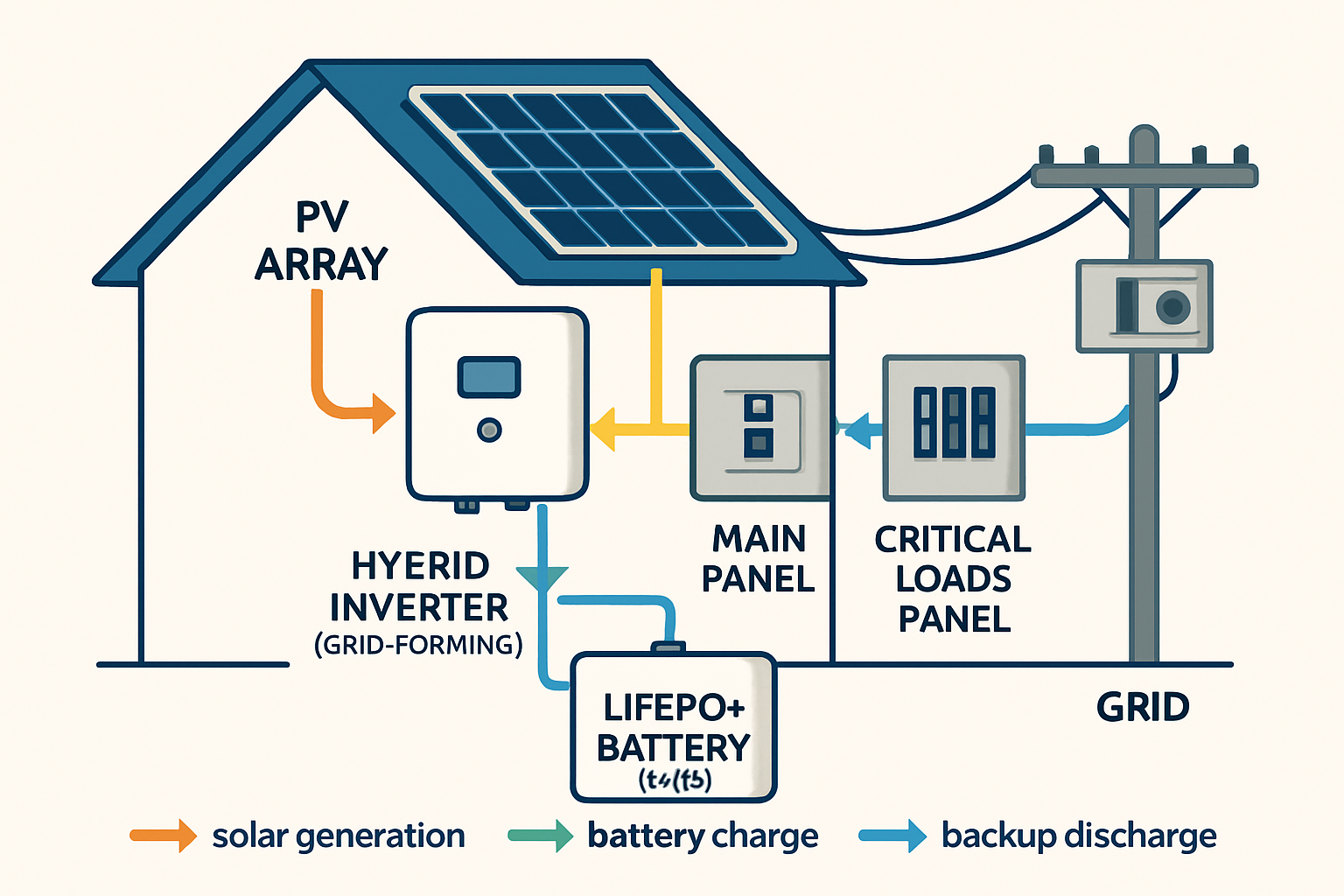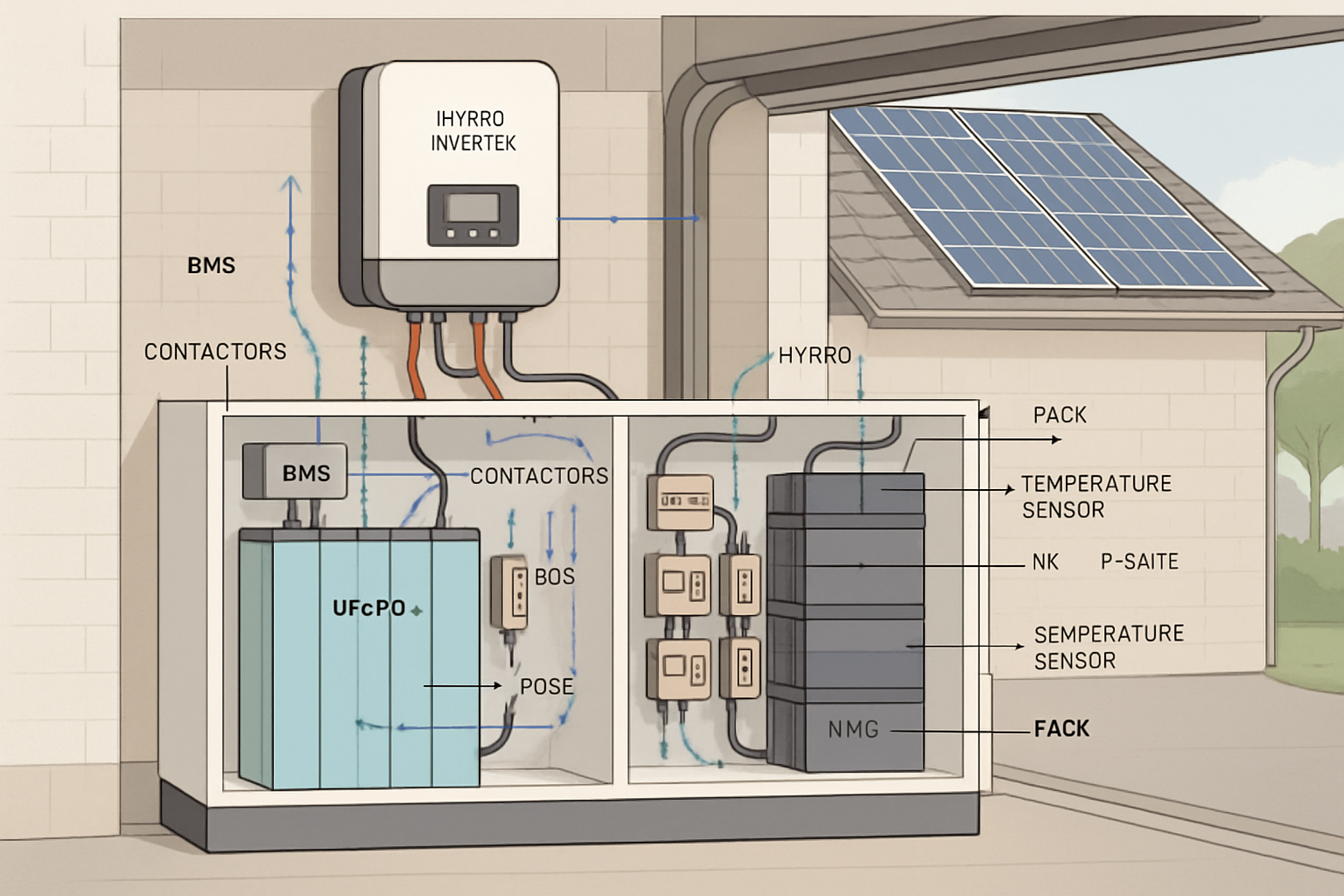Debates about solar power often hinge on anecdotes. Data clears the fog. This piece uses Solar Facts from IEA, IRENA, EIA, and the U.S. Department of Energy to test common claims. You will see where the numbers land on capacity, jobs, costs, grid stability, and recycling. Then you will get practical tips on pairing solar with batteries for reliable home energy.

What leading datasets actually say
Installed capacity and scope
IRENA maintains the most cited database on renewable capacity across countries. The latest statistical compendium tracks solar growth by market segment and geography, and it provides downloadable datasets for audits and planning. See the current series at Renewable energy statistics 2025. The agency’s mandate is broad. It covers technology, policy, and finance across renewables, with a mission to support sustainable development and energy access, as outlined on IRENA.
The U.S. Energy Information Administration publishes official national statistics. You will find generation, capacity, and consumption time series for solar, plus interactive tools for analysis on EIA. These resources help confirm trends you see on the ground and align project assumptions with market reality.
Jobs and supply chains
Claims that solar jobs are “short term” do not square with data. IEA tracked a sharp increase in manufacturing jobs across polysilicon, wafers, cells, and modules. The total nearly doubled over the last decade to about 600,000 in 2021, with additional employment in inverters, racking, and mounting. See IEA’s supply chain assessment at Solar PV Global Supply Chains.
Electricity is not the whole story
Solar Facts include heat, not only power. The IEA Solar Heating and Cooling programme documents large deployment of solar thermal for buildings and industry. Medium-temperature collectors support process heat as well. See the 2021 edition at IEA SHC Solar Heat report (2021 edition) and the technology overview at Process Heat Collectors: State of the Art.
Myths vs facts backed by numbers
| Myth | Fact | Primary source |
|---|---|---|
| Solar jobs fade after construction. | Manufacturing jobs roughly doubled in a decade, reaching nearly 600,000 in 2021. Inverter, racking, and mounting add more. | IEA: Solar PV Global Supply Chains |
| PV panels cannot be recycled. | End‑of‑life management pathways exist. Reports outline recovery of glass, aluminum, and valuable materials from modules. | IRENA & IEA PVPS: End‑of‑Life Management |
| Solar only makes electricity. | Solar thermal supplies heat for buildings and industry. Medium‑temperature collectors can serve process heat. | IEA SHC 2021, IEA SHC Task 49 |
| Grids cannot handle more solar. | Grid integration uses forecasting, flexibility, market design, and fast controls. Operators already apply these tools. | IEA: Getting Wind and Solar onto the Grid |
| Policy only moves in mature markets. | Emerging economies use auctions and roadmaps to scale solar. Uzbekistan provides a clear example. | IEA: Uzbekistan Solar Policy Roadmap |
| Solar lowers property data quality. | New MLS standards add solar fields for production data. This improves valuation and transaction security. | U.S. DOE/EERE: MLS Success Story |
Grid stability: what operators actually use
Forecasting and visibility
Operators reduce variability risk with numerical weather prediction, plant telemetry, and SCADA. Better forecasts lower reserve needs and curtailment. IEA documents these practices and how independent system operators set rules that align scheduling with VRE ramp rates. See IEA Grid Integration.
Flexibility and markets
Flexible resources include storage, demand response, and fast‑ramping thermal units. Market tools like locational marginal pricing and ancillary service products compensate flexibility. Grid codes such as fault ride through keep plants connected during disturbances. The IEA report provides technical guidance and case studies.
Why storage closes the gap
Pairing PV with batteries shifts daytime output to peak hours. Lithium iron phosphate (LiFePO4) batteries offer long cycle life and stable thermal behavior. An integrated energy storage system (ESS) bundles batteries, a hybrid inverter, and controls. This reduces wiring errors and speeds commissioning. A hybrid solar inverter converts DC to AC and manages PV plus storage in real time.
Simple sizing tip: estimate your evening load. If your home uses 8 kWh after sunset, target a usable battery capacity near 8–10 kWh to cover typical nights. Check round‑trip efficiency and depth‑of‑discharge in the datasheet. For off‑grid cabins or farms, add a buffer for cloudy spells. Our product line includes LiFePO4 batteries, integrated home ESS, off‑grid solar bundles, and stand‑alone inverters to match these needs.
Costs and policies: read the signals, not the rumors
Auctions and feed‑in frameworks
Tendering keeps prices transparent and bankable. The IEA notes auction activity across many regions. Uzbekistan’s program illustrates how clear policy and competitive bids attract investment. See Solar Energy Policy in Uzbekistan: A Roadmap. Earlier feed‑in tariffs also accelerated capacity buildout, as seen in historical IEA reporting for Canada’s Ontario program in the 2016 market outlook. These policy tools set the stage for private capital to scale projects.
Cross‑checking numbers
You can validate national trends at EIA and compare them with capacity datasets at IRENA. Aligning both sources helps spot reporting lags and reconcile AC/DC capacity nameplates. This approach reduces errors in financial models and project bids.
Lifecycle and recycling: plan for the end at the start
Panel end‑of‑life pathways
Long project life does not remove the need for end‑of‑life plans. The joint IRENA & IEA PVPS report on PV end‑of‑life outlines collection models, material recovery, and design best practices. You will find methods to recover glass, frames, and high‑value fractions. This supports circularity targets and compliance with producer responsibility rules.
Thermal systems and process heat
For hot water and industrial heat, solar thermal can cut fuel bills and emissions. IEA SHC’s Task 49 reviews medium‑temperature collectors that reach typical process ranges. Pairing these systems with smart controls and storage tanks smooths demand peaks and stabilizes output.
Practical steps for homeowners and facility managers
Design and sizing
- Load profile first. Map hourly use for at least two typical weeks (summer and winter).
- Panel array. Size PV to cover annual kWh and charge batteries by early afternoon on most days.
- Battery. Pick LiFePO4 for long cycle life and safety. Match usable capacity to evening and early‑morning loads.
- Inverter. Choose a hybrid solar inverter with enough surge for HVAC and pumps.
- Off‑grid sites. Add generator integration and extra storage days for resilience.
Data and documentation
- Keep serial numbers, commissioning reports, and warranty PDFs in one place.
- Record PV production and battery SOC trends for at least the first three months.
- If you plan to sell the property, store system specs and production data. Real estate MLS platforms in the U.S. already include solar fields, as noted by the U.S. DOE/EERE MLS success story.
Key takeaways
Solar myths fade under consistent statistics. IRENA tracks capacity expansion and helps compare markets. IEA documents manufacturing jobs, supply chains, grid integration, and process heat. EIA anchors national datasets for generation and capacity. U.S. DOE shows how better data flows into property markets. Storage strengthens solar’s value at the meter. LiFePO4 batteries and integrated ESS hardware bring reliability, while hybrid inverters manage flows in real time. Design with the numbers, not assumptions, and your system will serve you longer and at lower risk.
References
- IRENA: Renewable energy statistics 2025
- IRENA: Agency overview and data access
- IEA: Solar PV Global Supply Chains
- IEA: Getting Wind and Solar onto the Grid
- IEA SHC: Solar Heat report (2021 edition)
- IEA SHC Task 49: Process Heat Collectors
- IRENA & IEA PVPS: End‑of‑Life Management of PV Panels
- IEA: Solar Energy Policy in Uzbekistan – A Roadmap
- EIA: U.S. energy statistics portal
- U.S. DOE: Solar Energy Topic
- U.S. DOE/EERE: Real Estate Professionals Embrace Solar Power





Leave a comment
All comments are moderated before being published.
This site is protected by hCaptcha and the hCaptcha Privacy Policy and Terms of Service apply.